What climate change means for Hennepin County
What causes climate change
Climate change is caused primarily by humans burning fossil fuels, such as coal, oil, and natural gas, for energy to power buildings, fuel vehicles, and create goods. Burning fossil fuels for energy releases excess greenhouse gases into the atmosphere, most notably carbon dioxide (CO2), nitrous oxide (N2O), and methane (CH4). The buildup of excess greenhouse gases acts like a blanket that traps heat around the world, disrupting the climate.
For more information on how climate change works, see climate change evidence from NASA.
 How our climate is changing
How our climate is changing
Minnesota’s climate is already changing rapidly and will continue to do so. Our region has gotten much wetter and warmer, driven by more frequent heavy precipitation and warmer winters.
The variability in weather that Minnesota is known for between warm and cool and wet and dry will still be a staple of our climate, with projections showing that in some ways the climate will become more variable. This increased variability puts increased strain on residents, communities, businesses, county operations, and the natural environment.
Learn more about climate change in Minnesota from the Minnesota Department of Natural Resources.
 Our lives depend on a stable climate
Our lives depend on a stable climate
A functioning, stable climate serves as the foundation of our lives. Our health and safety, water supplies, food systems, access to healthy air, and where we are able to live all depend on a stable climate.
Climate change is the ground shifting under our feet, challenging our capacity to grow food, changing the diseases and pests we have to deal with, disrupting our communities, and threatening our health and safety.
Local impacts of climate change
Climate change impacts everyone’s health and well-being. Health and livability impacts of climate change the county anticipates preparing and responding to include:
- Increases in air pollution
- Flash flooding and groundwater flooding
- Extreme heat and cold
- Increases in pests and disease
- Mental health issues such as anxiety, stress, depression, and post traumatic stress disorder
The impacts of climate change are not experienced equally. Like other environmental justice issues, data shows that people of color, low-income families, and residents with disabilities contribute least to the problem of climate pollution, but these residents are the most at risk from negative climate impacts.
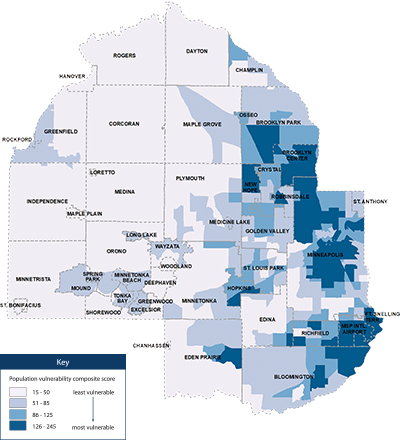
 Rising temperatures and changes in climate patterns are likely to increase air pollution, resulting in decreased air quality that will make underlying health conditions worse.
Rising temperatures and changes in climate patterns are likely to increase air pollution, resulting in decreased air quality that will make underlying health conditions worse. 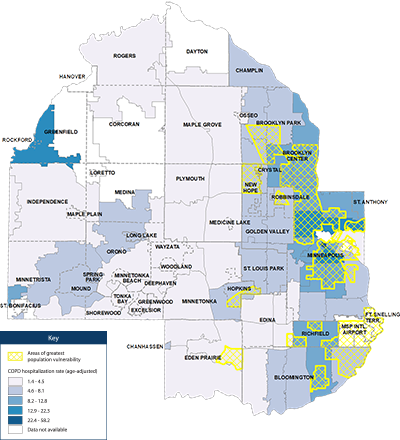
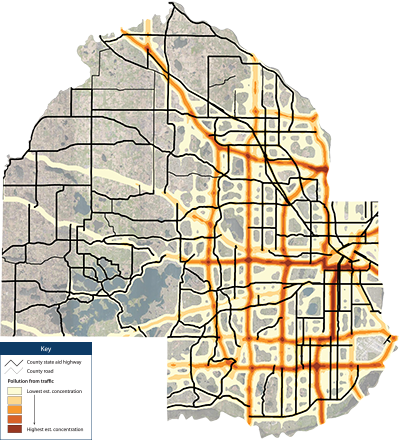
 Hennepin County has an abundance of natural areas and diverse landscapes that provide critical habitat for wildlife, protect water quality, offer recreational opportunities, and serve as the foundation for the region’s environmental wellbeing, economic prosperity, and collective quality of life.
Hennepin County has an abundance of natural areas and diverse landscapes that provide critical habitat for wildlife, protect water quality, offer recreational opportunities, and serve as the foundation for the region’s environmental wellbeing, economic prosperity, and collective quality of life.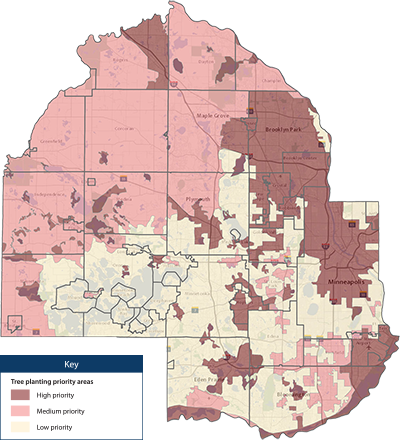
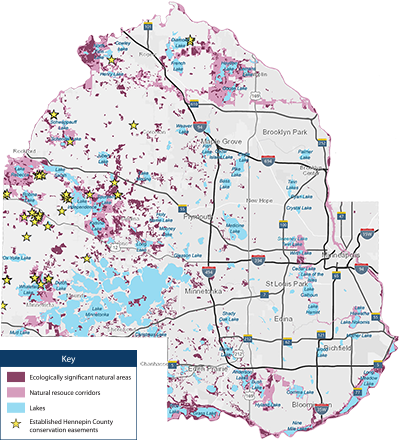
 Occurrences of daytime extreme heat are projected to increase by 2050. While a couple of degrees may not seem significant, increased temperatures combined with increases in precipitation will lead to increased humidity, compounding risks to residents with underlying health conditions.
Occurrences of daytime extreme heat are projected to increase by 2050. While a couple of degrees may not seem significant, increased temperatures combined with increases in precipitation will lead to increased humidity, compounding risks to residents with underlying health conditions.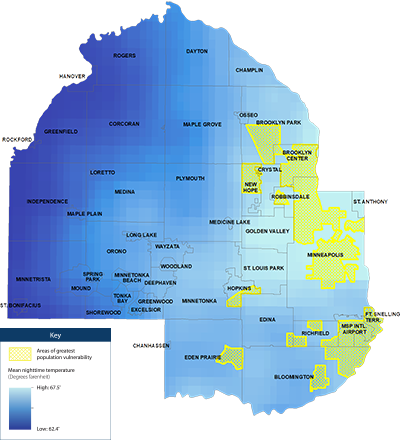
 More frequent, heavy rainfall means more flooding. Hennepin County is experiencing a significant increase in the number of 2-, 3- and even 4-inch rainfall events.
More frequent, heavy rainfall means more flooding. Hennepin County is experiencing a significant increase in the number of 2-, 3- and even 4-inch rainfall events. 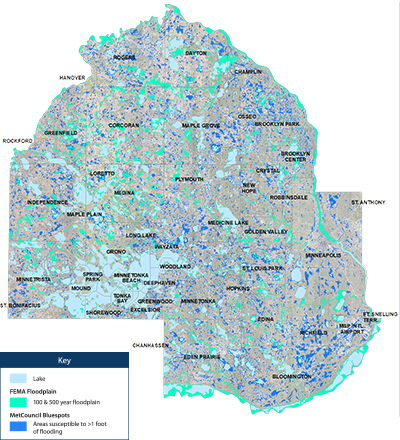
 Our health and safety, water supplies, food systems, access to healthy air, and where we are able to live all depend on a stable climate. So, it stands to reason that the climate crisis has impacts on our mental health and well-being.
Our health and safety, water supplies, food systems, access to healthy air, and where we are able to live all depend on a stable climate. So, it stands to reason that the climate crisis has impacts on our mental health and well-being.